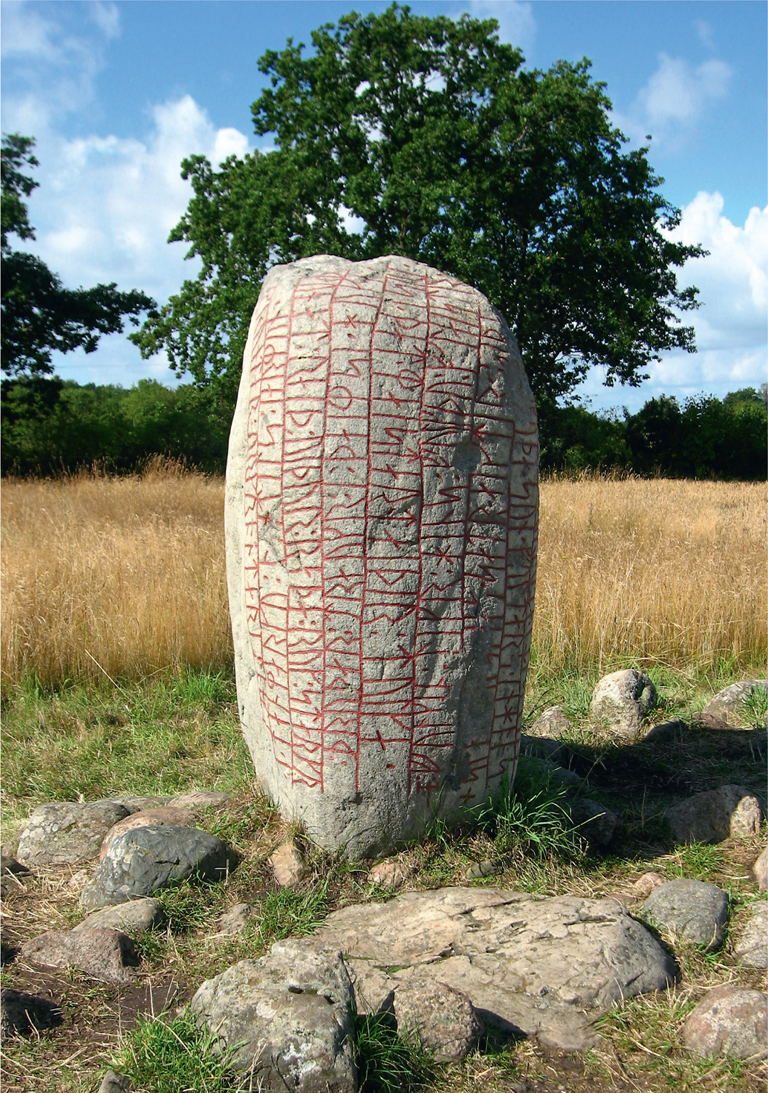
Preface
This book has been on its way for a long time, too long actually. My interest in studying cosmology from archaeological perspectives started in the 1990s. First I published investigations of Christian cosmology in urban and rural settings (Andrén 1998b, 1999, 2000b), although I conducted parallel fieldwork at the Iron Age ringfort of Ismantorp on Öland in 1997–2001. My interests in pre-Christian aspects of cosmology were more pronounced during 2000–2007, when I co-directed the interdisciplinary project Roads to Midgard – Old Norse Religion in Long-term Perspectives at Lund University. My professional move to a position at Stockholm University in 2005 meant a lot of new work and responsibilities, but also an important broadening of my chronological horizons. I have been increasingly engaged in the international scene of Scandinavian studies as well. From colleagues in folklore studies, the history of religion, literary studies, and philology I have deepened my interdisciplinary understanding of ancient Scandinavia.
Other projects (Andrén 2010, 2011a, 2011b) have interrupted this book, but now that it is finally finished, I owe many people my sincere thanks. Although the project Roads to Midgard no longer formally exists as an active network, the book is published in the series of the project, since many of the ideas and preliminary investigations were formed within this inspiring environment. Therefore my first and warmest thanks go to my co-directors Kristina Jennbert and Catharina Raudvere and to the participants, Stefan Arvidsson, Åsa Berggren, Maria Domeij, Ann-Britt Falk, Peter Habbe, Ann-Mari Hållans Stenholm, Ann-Lili Nielsen (who sadly died in 2008), Gunnar Nordanskog, Nina Nordström, Heike Peter, Jörn Staecker, and Louise Ströbeck.
During my fieldwork at Ismantorp, Mats Blomhé was my closest collaborator, who cheered up the working days with his knowledge and quiet humour. Other indispensable participants during the fieldwork were David Andrén, Henke Fallgren, Lotta Fernstål, Roberto Grassi, Bent Gregersen, Peter Pedersen, Magnus Pettersson, Jack Simonsen, and Klaus Thorsen. In Stockholm, I have encountered a large and very inspiring scholarly environment. In this context, I would like to single out for my warmest thanks Kerstin Cassel and Susanne Thedéen, who have read and commented some of the chapters, and Torun Zachrisson, who has read the whole book, and has given many comments from her immense knowledge of Iron Age Scandinavia. I started looking at the Bronze Age following a kind invitation to Copenhagen from Klavs Randsborg to be the examiner for Flemming Kaul’s doctoral thesis. In further studies of cosmology in the Bronze Age and Iron Age, I have had rewarding discussions with Kristian Kristiansen and Lotte Hedeager as well.
In the international world of Scandinavian studies, I have met many colleagues with a passion for and profound knowledge of the ancient Nordic world. I am deeply indebted to Terry Gunnell who has read the whole book, and commented on the content as well as the language. My profound thanks go to Margaret Clunies Ross as well. She was a very considerate host during a sabbatical in Sydney in the spring of 2006, and has read the whole book with a critical – but friendly – eye. In Sydney, I also had interesting discussions with Peter Hupfauf concerning possible ways of using Old Norse traditions in art. Finally, Olle Sundqvist has been kind enough to read the whole book, and to share his insights on the issue of religion.
During three other sabbaticals, my scholarly horizons have been broadened in other directions. In 2009–10 at the Swedish Collegium for Advanced Study in Uppsala, the daily discussions, above all with Philipp Lepenies and Björn Wittrock, gave me new insights into different areas of humanities and social sciences, with clear relevance for this study. During the winter term in 2010–11 in Heidelberg, Thomas Meier and Roland Prien introduced me to Late Antiquity and the early Middle Ages in central Europe. During excursions and ongoing discussions, I had to revise several of my preconceived ideas about these periods. During a second period at the Swedish Collegium for Advanced Study in Uppsala in 2013, I had the pleasure of working with John Lindow, Steve Mitchell, and Jens Peter Schjødt. They have not read my text, but daily discussions with them have helped me reconsider some important aspects of my ideas.
As always, Alan Crozier has patiently followed my attempts to write English. I warmly thank him for recasting one chapter from Swedish to English, and for revising the whole book in the final stages. My editor Annika Olsson has been an invaluable collaborator throughout the production of this book. Not least her humour and firm deadlines finally brought this book to an end.
I am not sure that my family will be really interested in this book. My children, Rasmus and Sara, having two archaeologists as parents, have chosen to follow their own pursuits. But I hope that this book in a tangible way will show my passion to them. Sanne, for reasons of principle, is not interested in my ‘northern barbarians’, but it is a privilege to have her as a colleague and partner. Above all, I appreciate her humour and strange interest in writing archaeological texts during summer vacations.
Anders Andrén

Figure 1. The rune stone at Karlevi in Vickleby on Öland. The monument, from about the year 1000, commemorates one Sibbi Fuldarsson, who was a sea-warrior ruling ‘over land in Denmark’. The text includes the oldest attested skaldic verse in dróttkvætt and the oldest attested Scandinavian form of the term Jǫrmungrundr (‘mighty ground’) as an expression of the world (see Andrén 2007b) (photo by the author).